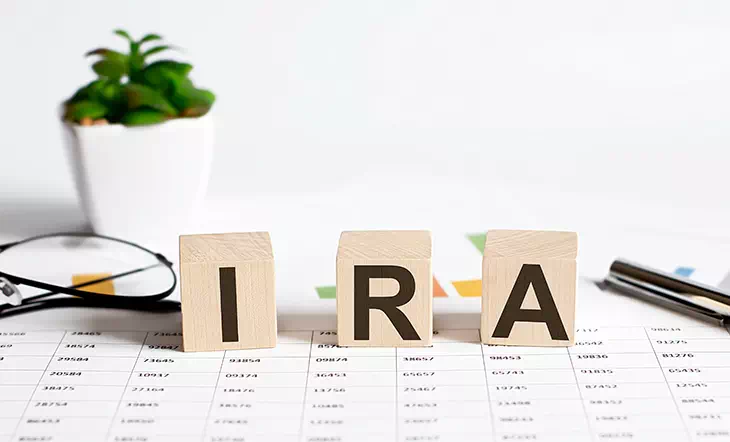5 Tips on Using an IRA to Pay for Education

When it comes to parenting, the list of responsibilities can be a long one. Right from offering your children a safe and lovable home to tending to their medical needs, the duty of a parent never ends. Among these, the most crucial one is perhaps offering your child with the right opportunities for education. Unfortunately, saving for higher education, especially college, is an uphill task. The costs of education are soaring in the country. Coupled with inflation, the final outcome can be astronomical. This is why it is important to start saving early and take advantage of the power of compounding.
There are several ways to save for higher education costs. The 529 education savings account is a common choice made by parents. Apart from this, you can also invest in the market, keep a dedicated bank account for your child’s educational expenses, or use an Individual Retirement Account (IRA) to fund a child’s college fees.
If you find yourself leaning towards using an IRA to pay for education expenses, here are some things you must keep in mind.
Table of Contents
- 1. Know the rules for withdrawals from an IRA
- 2. Understand the difference between using a Roth IRA and a traditional IRA for education expenses
- 3. Use an education IRA
- 4. Keep in mind the repercussions of using an IRA on FAFSA
- 5. Make sure you have another retirement account for your retirement expenses
- To sum it up
1. Know the rules for withdrawals from an IRA
While the IRA makes for a good pick to cater to educational expenses, there are some rules that apply to it that may or may not suit you. Generally, if you withdraw funds from a retirement account, such as the IRA or a 401(k) account, the Internal Revenue Services (IRS) levies a 10% penalty if the withdrawal is made before the age of 59.5. However, there are some exemptions to this rule. You can withdraw funds without incurring the 10% penalty for qualified expenses, including:
- First time home purchase
- Health related expenditure not covered under an insurance plan
- College tuition
Moreover, even though college tuition is a qualified expense for which you can make withdrawals without paying a penalty, there are some rules to follow here, such as:
- The college expenses should be for yourself, your spouse, your child, or your grandchild.
- The student should be at least half time enrolled in a college or educational institution. This includes a public, private, or non-profit college, university, or post-secondary institution as well as vocational schools.
- The institution that the student goes to should be eligible to participate in a student aid program administered by the U.S. Department of Education.
The funds from an IRA can be used to cover a wide range of expenses apart from the tuition fee, including books, supplies, equipment required for the course, room rent, and boarding expenses.
A crucial point to note is that even though the qualified withdrawals do not attract a 10% penalty, you still have to pay income tax on the withdrawals. In addition to this, the total amount withdrawn cannot exceed the qualified expenses.
2. Understand the difference between using a Roth IRA and a traditional IRA for education expenses
The withdrawal rules are not the same for a Roth IRA and a Traditional IRA. Although both these retirement accounts can be used to cover qualified educational expenses, the treatment of taxes is different in both.
As you may know, a Roth IRA is funded by your after tax dollars, so your money grows tax free. On the other hand, a traditional IRA is funded by your before tax dollars and your money grows tax deferred. While there is no 10% penalty for making early withdrawals for qualified reasons, you will have to pay income tax on withdrawals made from a traditional IRA. The Roth IRA withdrawals, however, will not attract any income tax.
But, there are rules to follow here, as well. In order to draw tax free earnings from a Roth IRA:
- The Roth account should be open for at least 5 years. This is calculated from January 1 of the year when you made the first contribution. In case of a Roth conversion from a traditional account, the 5 year period is calculated from January 1 of the year you made the conversion.
- The tax payer should be 59.5 or older.
- The tax payer becomes
The contributions can be withdrawn even if the tax payer is not 59.5. However, if both the contributions and the earnings are withdrawn before the age of 59.5 and the Roth IRA has been held for less than 5 years, the earnings will be taxable.
Keeping these factors in view, the Roth IRA can be a better option out of the two IRAs with its lower tax liability.

Need a financial advisor? Compare vetted advisors matched to your specific requirements.
Choosing the right financial advisor is daunting, especially when there are thousands of financial advisors near you. We make it easy by matching you to vetted advisors that meet your unique needs. Matched advisors are all registered with FINRA/SEC.
Click to compare vetted advisors now.3. Use an education IRA
You can consider using an education IRA to cover higher education expenses. An education IRA is a tax-advantaged account that allows you to invest for the purpose of higher education. It is also known as the Coverdell Education Savings Account (ESA). An education IRA allows tax deferred growth on your contributions. And qualified withdrawals can be made tax free.
You can make contributions to an ESA till the child turns 18. However, the funds can be used by the child till the age of 30. Some people misunderstand this and keep contributing money till the child turns 30. In this case, a 6% tax is levied on the contributions made after the age of 18.
Just like any other IRA, an education IRA can also be used to cover several college-related expenses, such as:
- Tuition fees
- Cost of books
- Travel expenses
- Supplies
- Course related equipment
- Computer or laptop
- Room rent
- Boarding charges, etc.
4. Keep in mind the repercussions of using an IRA on FAFSA
If you are looking forward to using the Free Application for Federal Student Aid (FAFSA), withdrawing funds from an IRA can obstruct the amount of financial aid you qualify for. In the case of an education IRA, if you apply for financial aid and use funds from the ESA, your financial aid eligibility can be reduced by approximately 5.64% of the amount of money you have in your ESA at the time of filling the application for financial aid.
Even if you use a traditional or Roth IRA, your financial aid eligibility will still be lowered. When a student applies for financial aid, they also have to report their income and owned assets. This helps FAFSA decide whether a family can afford the costs of college education or not. The Free Application for Federal Student Aid takes into account a family’s tax information from the last two years.
If, as a parent, you own a retirement account like a Roth IRA or a traditional IRA, FAFSA will see them as your financial assets. However, if you withdraw funds from any of these accounts two years before applying for financial aid, FAFSA will consider it as your income.
IRA funds can reduce financial aid by as much as half. This holds true even if you only withdraw your contributions and not the earnings. While the withdrawals made from contributions may not be counted in your taxable income for the year, they will still be seen as an income by FAFSA.
Having said that, the child can still apply for FAFSA and use the IRA funds for higher education expenses. But the financial aid may be reduced. Hence, it is important to account for these differences while planning for future costs.
5. Make sure you have another retirement account for your retirement expenses
The contribution limits for an IRA are fixed each year. For 2021, these are:
- $6,000 for investors below the age of 50.
- Investors aged 50 or older can add an extra $1,000 as a catch-up contribution every year, bringing the total to $7,000.
Since the limits are prefixed and it is not possible to surpass these, your IRA may have limited funds. If you use one account for your child’s education costs and your retirement, you may end up with insufficient savings. It can also be challenging to make up for lost time and money in your retirement, since you would be older and may have health concerns that prohibit you from working or earning.
Therefore, it is essential to have enough retirement savings. You could invest in the market, open a 401(k) retirement account, or buy a life annuity. Regardless of what you choose, make sure you start retirement planning at an early age, so you do not end up compromising your child’s future.
If you find yourself with inadequate funds for retirement, it may not be advisable to use your IRA for your children’s education expenses. In this case, you can consider a student loan. Even though the interest rates are high, your child will have plenty of time to repay the money. On the contrary, taking a loan in your retirement can be tougher to repay.
To sum it up
An IRA makes for a good pick in many scenarios. They also hold an advantage over 529 accounts in some ways, primarily because if your child does not intend on going to college, your 529 account will attract a penalty when you withdraw funds for non-qualified expenses. An IRA, on the other hand, can be used for a number of reasons. However, you need to make sure that your other retirement savings are safe, secure, and adequate before you use your IRA on a child. This can be done with efficient education and retirement planning.
Education and retirement planning are both long term processes and a financial advisor can help you ace it. You can use our free tool to reach out to upto 3 professional financial advisors today and find the one that best matches your needs.
A team of dedicated writers, editors and finance specialists sharing their insights, expertise and industry knowledge to help individuals live their best financial life and reach their personal financial goals. We believe that there is no place for fear in anyone's financial future and that each individual should have easy access to credible financial advice.
Related Article
11 min read
13 Aug 2025
The Complete Guide on Financial Planning for Couples
According to a recent survey of Certified Divorce Financial Analysts (CDFA) professionals, the top three reasons couples split up are basic incompatibility, infidelity, and, not surprisingly, money issues. In fact, financial disagreements account for around 22% of all divorces. Financial planning as a couple is a whole different ball game compared to managing money on […]
7 min read
07 Jan 2025
How 529 Plans Help Manage Costs and Maximize Education Savings
The cost of higher education in the United States has been steadily increasing. This places a significant financial burden on students and their families. In the 2024-25 academic year, the average tuition for full-time in-state students at public four-year institutions rose to $11,610, marking a $300 increase from the previous year, a 2.7% rise before […]
10 min read
09 Aug 2024
529 Plan Rule Changes for 2024 and Their Impact on Your Retirement Planning
The 529 plan is a popular investment vehicle designed for individuals, including parents, grandparents, and others, to save for educational expenses. This tax-advantaged account allows for tax-deferred growth and tax-free withdrawals when used for qualified education costs, such as tuition and other related expenses. Sponsored and run by 50 states and the District of Columbia, […]
12 min read
03 Sep 2021
Roth IRA: How to Use it For College
The cost of education in America can be burdening. In the last 30 years, the average college cost of a four-year public institution has increased by 213%. In the past decade alone, the cost of education has shot up by 29%, with private college tuition costs rising by 25%. If you have children or grandchildren […]
More From Author
14 min read
23 Jan 2024
How to Determine If Your Financial Advisor Is Doing a Good Job Each Year
The decision to hire a financial advisor is a prudent move. Seeking professional advice can provide valuable insights and a roadmap to achieve your financial goals with strategic planning. But the world of financial advice is crowded. While some advisors bring qualifications, expertise, and a commitment to your financial well-being, others may fall short of […]
4 min read
30 Oct 2023
How to prepare for a meeting with your Financial Advisor
What do you do before you visit a doctor? Understand your condition, prepare for all the questions that the doctor would ask, ensure all your test reports and medical history documents are in order and so on. Preparation is a must even before you visit a financial advisor. Table of Contents7 Things to do to […]
3 min read
26 Jul 2019
Best Retirement Calculators to plan Retirement
It is said that a goal without a plan is just a wish. This holds true even for retirement planning. You dream of a peaceful retired life. To achieve that you must plan for your golden years well in time. Various retirement tools make your task easier. For example, a retirement calculator helps you calculate […]
4 min read
23 Mar 2020
How to get rid of Money Anxiety?
Is money anxiety even a thing? Yes, it is! Money anxiety is something we all have dealt with or are likely to deal with at some point in our life. Sometimes, you may not even know that you are money anxious unless you take note of it. But the good part here is that money […]

Find & Compare Top Financial
Advisors in your area
Get Started
Popular Posts
Categories
- Business Finance (2)
- Education Planning (31)
- Estate Planning (31)
- Financial Advisor (1)
- Financial Advisor Guide (55)
- Financial Planning (138)
- Investment Management (99)
- Personal Finance (15)
- Portfolio Management (1)
- Retirement (30)
- Retirement Healthcare (1)
- Retirement Planning (109)
- Retirement Plans (1)
- Uncategorized (4)
Subscribe to our
newsletter & get helpful
financial tips.
The blog articles on this website are provided for general educational and informational purposes only, and no content included is intended to be used as financial or legal advice. A professional financial advisor should be consulted prior to making any investment decisions. Each person’s financial situation is unique, and your advisor would be able to provide you with the financial information and advice related to your financial situation.



